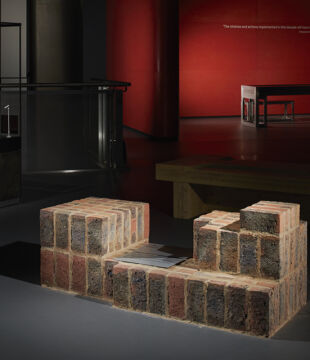
Details
Location: Kensington, London
Brick Manufacturer: Bulmer Brick & Tile Co Limited
Brick Name: Mulberry Stock, Red Rubber
Architect: Purcell Architects
Contractor: Swift Brickwork Contractors Limited
About the project
Judges Comment:
“A fantastic demonstration of traditional methods of hand brick carving and colour matching with the original Orangery façade. Tremendous craftmanship unanimously voted for by the UK leading Brick Work Contractors.”
Kensington Palace Orangery, located next to Kensington Palace in Kensington Gardens, was built in 1704-05 for Mary's younger sister, Anne, who became Queen when William died. Anne used Kensington for entertaining and she held parties in the Orangery.
The building had under-floor heating and in winter it was used as a conservatory for delicate plants.
The original architect of The Orangery is thought to have been Nicholas Hawksmoor, the clerk of works on Kensington Palace and the designer of six new churches in east London.
In 2019, plans were submitted to build the education centre at the palace, where a two-floor extension to the Orangery will allow enough space for a lunch and afternoon tea restaurant, catering facilities and an outdoor terrace.
Swift Brickwork Contractors Ltd had to be vetted and complete numerous sample panels in order to meet the standards required for the Orangery extension. This involved demonstrating that the traditional methods of hand carving the bricks used in the niches could still be achieved and match the appearance of the original Orangery facade.
Working on the Kensington Palace Orangery was an incredibly prestigious project to undertake. It demanded a tremendous amount of focus and precision, as we had to meticulously adhere to traditional bricklaying techniques and finishes such as penny rolled joints. Employing lime mortars and putty, along with handcrafted bricks, was essential to maintaining the authenticity and historical integrity of the structure.
Each arch was intricately crafted by hand, with every individual voussoir meticulously cut and placed. Due to the absorbent nature of the Red Rubber bricks, each brick was soaked in water prior to its instalment. This allowed enough moisture in the brick to efficiently repoint the thin lime putty joints.
In modern construction, you would typically see such arches installed as a pre-cast unit. However, the Orangery extension required the level of craftsmanship seen centuries previous in order to achieve the Grade 1 listed aesthetic.
Each brick had to be hand carved to a designed template, constructing the curve of the semi-elliptic niches course by course. Once these elements had set, the bricks then had to be rubbed down and repointed in order to achieve a facing brick appearance to match the existing Grade 1 listed facade. Each wall of the extension incorporated a projecting Albion Heritage stone cill as well as the seating bases of the niches.
The attention to detail and craftsmanship poured into the construction of the Kensington Palace Orangery was a testament to our dedication to preserving the rich heritage and architectural legacy of such a historic site.
This exciting new development within the historic Kensington Palace grounds will offer an environment that meets the needs and requirements of school and community groups in order for the next generation to be educated on the extensive history of the monarchy, shedding new light on the building's fascinating past.
Sponsored by ACS Stainless Steel

ACS has led product and process innovation for over 35 years and we often forge the path where others then follow. Our proactive approach has kept us at the forefront of the industry. This has enabled our business to become the manufacturer of choice for the largest brickwork and sub-contractors in the UK.

















